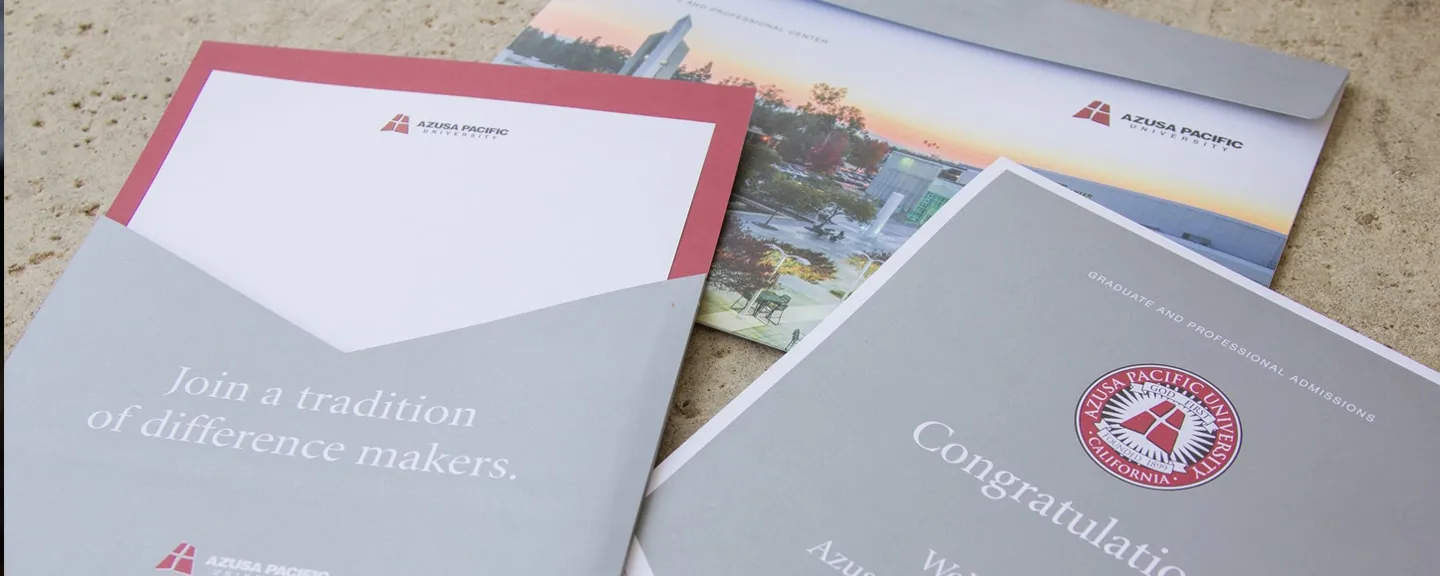- Home
- >
- APU Articles
- >
- News Article
A Graduate School Application Timeline: What to Do and When to Do It
January 17, 2019 | Written By Heather Nelson

Of course, all schools have their own application requirements, so there’s not really a one-size-fits-all tool. Still, this general graduate school application timeline will help get you started, highlight important milestones along the way, and ensure you feel confident when submitting all of your materials (well before the deadline).
Graduate School Application Timeline
12 Months Out: Start Researching Schools and Programs Twelve months before applications are due, start the process of finding programs and schools that align with your career goals and personal preferences. Make a list of the schools you’re interested in and write down what sets each of them apart. Carefully consider the location, cost, program availability, and even the general feel of each campus. These schools should make you feel excited and hopeful, and align with your goals.
10-11 Months: Get Familiar with the Application Requirements Each school and program is different, so it’s a good idea to determine what you’ll need to check off before your application is due. For example, if you need to take a standardized test, you’ll want to find a test administration that works for your timeline. There may be other time-sensitive items that are part of your admission requirements, so call the admissions office (or visit the website) to receive complete information about specific application requirements.
6-9 Months: Prepare for and Complete any Standardized Testing Not every graduate school or program requires standardized testing for admission, but some do. By this point, you should know which test/s, if any, you need to take, be it the GRE, GMAT, LSAT, or MCAT. Sign up for a test date several months before your applications are due, allowing plenty of time for studying. You can sign up for online resources, head to your local bookstore for a study guide, or join a study group. If you don’t get the score you were hoping for the first time, don’t be afraid to try again. It’s completely normal to take a graduate school standardized test more than once.
4-5 Months: Visit Campuses to Experience the Culture Visiting the campuses on your list of schools will tell you a lot about the environment you could find yourself in for the next few years. It’s a good idea to sit in on a class, meet with a professor, and walk through common areas to see how they make you feel. This ensures you’ll feel comfortable at the school if your application is accepted and you choose to enroll. If you’re planning to enroll in an online program, connect with professors via email and video chat. They may also be able to connect you with current students who can tell you more about their unfiltered experience.
2-3 Months: Begin Applications and Request Transcripts When you finally start filling out your applications, you’ll notice they’re not exactly short—each application takes time and requires a good deal of thought. So, two months before the applications are due, set aside time to work on them (aim to tackle one or two sections at a time). You’ll want to start outlining and preparing your essay/letter of intent, so you’re focused when the time comes to sit down and start writing. Also, request transcripts from your undergraduate institution and ensure they are sent (electronically or via snail mail) to the correct contact at each school.
2 Months: Request Letters of Recommendations and Update Your Résumé Around the two-month mark, reach out to the professors and mentors you’d like to write you a letter of recommendation. You’ll want the recommendations to arrive around the same time as your application. It’s also a good idea to prepare a current résumé, so admissions officials can see the full picture of your work and volunteer experience.
1 Month (or as Soon as Possible): Finalize and Submit Your Applications
Around one month out, or sooner, your application requirements should be very nearly
finished. Have a friend or family member carefully read through each section for accuracy,
and then enlist two to three people to proofread your essay. Incorrect spelling and
grammatical errors can be a turn-off, so make sure your application and essay get
a thorough review from people you trust. You’ll also need to prepare your application
payments and check in with your references to ensure they finished and submitted your
letters of recommendation.
You don’t need to wait for the application deadline to submit your materials. In fact, you may want to submit your application and any supporting documents as soon as possible, in case applicants are accepted on a first-come, first-served basis. If you’re not sure about the admissions process at a school you’re applying to, don’t hesitate to ask your admissions professional for guidance.
Congratulations! After a year of planning, prepping, and studying, you’re now ready to submit those applications.
Pursuing a Graduate Degree at APU
At Azusa Pacific University’s Graduate and Professional Center, there are admissions representatives equipped and ready to help you through the entire admissions process. This passionate team of professionals can help you find the right program, give insight into what makes a strong application, and connect you to resources that will help you feel adequately prepared.
“We will journey with you from your first inquiry, through admission, and up to registering for your very first classes,” said Liz VanSkike, associate director of recruitment for the Office of Graduate and Professional Admissions at APU. “We find it a great joy to be a small part of the catalyst that will help you achieve your educational goal and ultimately your career aspirations.”
Hoping to learn more about graduate degrees at Azusa Pacific University? Explore the school’s Graduate and Professional Center to start charting a course toward your educational and career goals.